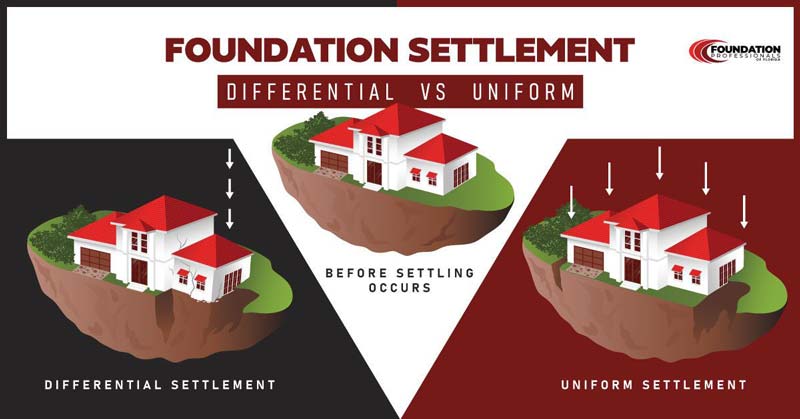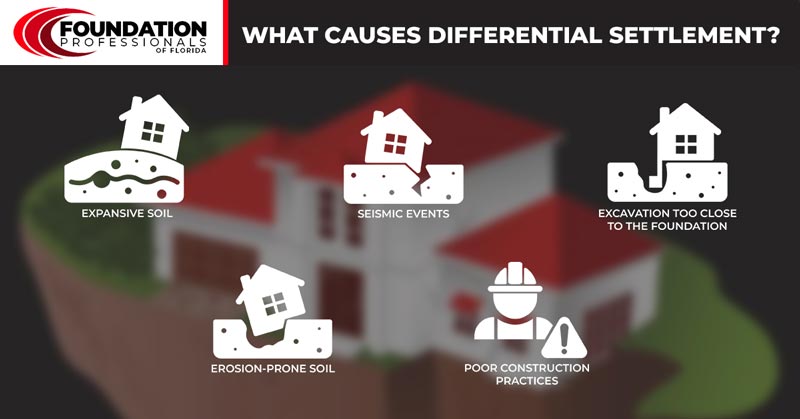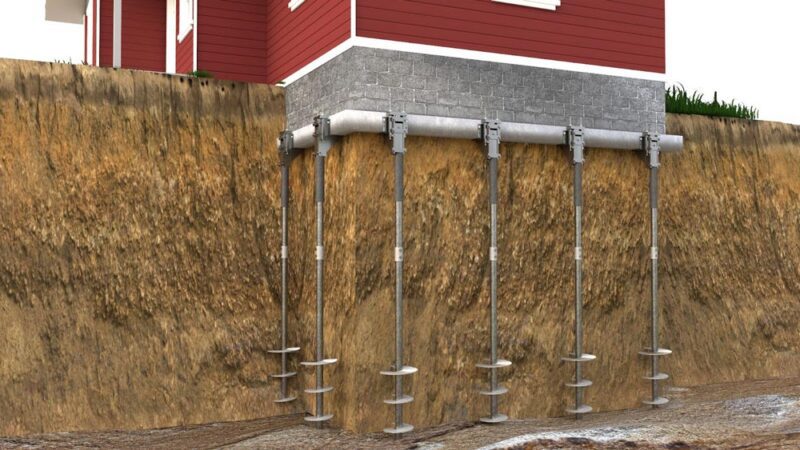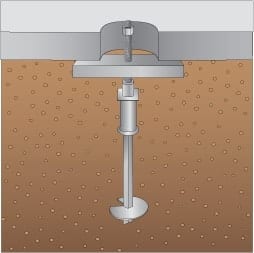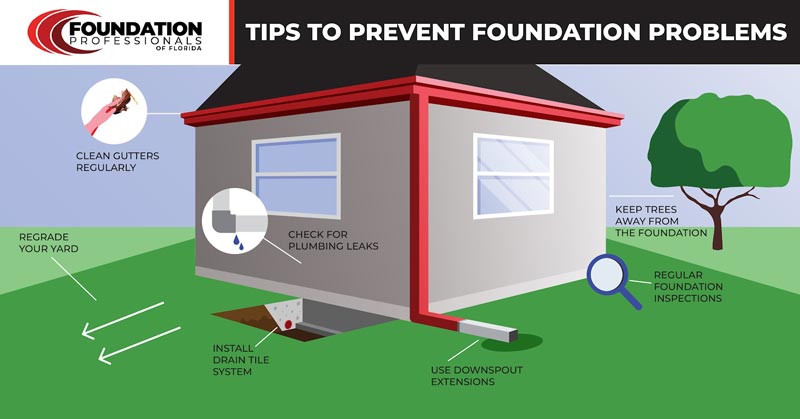Searching for information about recommended repairs for settling houses? If so, you’ve landed on the right page because that’s what we’re going to review in this article. We’ll go over why houses settle, uniform vs. differential settlement, common signs of foundation settlement, repair options, and more.
What Is Differential Foundation Settlement?
Differential foundation settlement is when a foundation settles into the ground unevenly. While all buildings will settle slightly into the ground after construction, this isn’t usually a problem so long as the settlement is uniform. The problems develop when the settlement is uneven. The best way to describe uniform vs. differential settlement is with an illustration:
Differential settlement can cause severe structural damage if it isn’t repaired in a timely manner. That means it needs to be spotted early. We’ll talk more about how to spot differential settlement in just a bit.
So, What Causes Differential Settlement?
Differential foundation settlement can happen for various reasons, including the following:
- Inadequate soil preparation – Soil needs to be tamped down before construction. If this isn’t done correctly, the structure could sink unevenly into the ground after it’s built.
- Expansive soil – Expansive soil is clay-rich and, because of this, expands and contracts with changes in moisture content. The expansive nature of these soils can cause serious structural problems, especially in regions with high levels of seasonal precipitation or high levels of soil moisture. The presence of poor drainage can exacerbate the problem.
- Erosion-prone soil – When the soil under a foundation erodes, it can leave behind voids. If the foundation settles into these cavities, differential settlement could result.
- Earthquakes and other natural disasters – We probably don’t need to explain how seismic events, hurricanes, and other natural disasters can damage a foundation and cause differential settlement.
- Weather changes – An example of this would be a foundation built on expansive soil during the dry season. When the rainy season rolls around again, and the soil soaks up moisture and swells, this creates movement in the ground under the foundation and could lead to differential settlement.
Common Signs of Foundation Settlement
Common signs of differential foundation settlement include the following:
- Cracks in walls, ceilings, and floors – These cracks can be small and easy to miss or large and conspicuous. They may be diagonal or horizontal. They’re less likely to be vertical.
- Doors and windows that no longer open and close properly – This may be because the frame of the door or window is no longer square due to foundation movement.
- Uneven floors – Uneven floors are also a common sign of differential foundation settlement.
- Stair step cracks in brick or masonry – This is a sure sign the foundation has moved.
- Chimneys and porches that are leaning away from the house – These separations might be barely noticeable at first.
It’s essential to address any signs of differential foundation settlement as soon as possible to prevent further damage and ensure the safety of the building and its occupants. A foundation contractor can assess the situation and recommend appropriate repairs to restore the stability of the foundation.
Recommended Repairs for Settling Houses
Recommended repairs for settling houses including underpinning using push, helical, or slab piers. Underpinning involves strengthening the foundation by constructing a support system beneath existing footings. This extends the foundation down to soil that can support it.
Push piers
Push piers are hydraulically driven into the soil using the building’s weight and hydraulic pressure. Once they’re in place, a synchronized hydraulic lifting system raises the foundation to maximum practical level or as much as possible without causing damage.
Helical piers
Helical piers look something like giant corkscrews and are turned into the soil until they reach the required torque and depth. A synchronized hydraulic lifting system then raises the foundation.
Slab piers
Slab piers are push or helical piers installed through holes drilled in the slab.
Regardless of the method used, underpinning is a complex process that requires the expertise of certified professionals. The Geological Solutions Consultants that go out and assess the properties prior to providing a bid do visual inspections. Any assessments, or load-bearing capacity tests are performed by Geological Engineers. This is not a typical part of the inspection process that is performed prior to work being done. If the conditions appear to be the effects of more than just traditional settling, it may be a requirement; however, this is a paid service to a licensed, insured engineer to provide a sealed repair plan to suggest specific underpinning, void filling, etc.
How to Help Prevent Foundation Settlement
Fortunately, there are things homeowners can do to help prevent uneven settlement. Because most foundation problems are caused by excess moisture in the ground around the foundation, the best way to avoid trouble is to get groundwater under control. Here are some ways to do that:
- Clean your gutters regularly – When gutters are clogged with debris, water overflows and accumulates around the foundation, where it can cause problems.
- Use downspout extensions – Downspout extensions direct water away from the foundation before release, reducing the chance of water-logged soil.
- Regrade your yard, if necessary – A yard that slopes away from the house allows water to drain away from the foundation, reducing the risk of problems.
- Keep water-hungry vegetation away from the foundation – You don’t want a reason to add water to the ground around the foundation.
- Keep large trees away from the foundation – Trees can draw moisture from the soil around the foundation, leading to soil shrinkage and foundation damage. Tree roots can also grow under the foundation, causing structural problems.
- Install a drain tile system – A drain tile system collects water from around the foundation and directs it away from the foundation, reducing the chances of foundation problems.
For more information, see Learn How To Drain Water Away From Your Foundation.
If you’re worried your house is settling, contact us today to schedule a foundation evaluation. If we find a problem, we’ll give you a repair estimate


